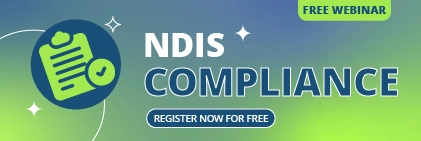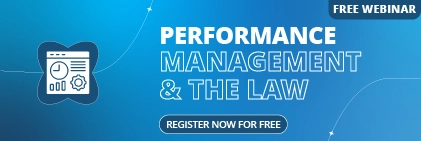Managing risks effectively is a key priority for leaders and managers within a business. Regulatory compliance, the mitigation of workplace incidents, or even protecting you and your client’s sensitive data, it’s all critical to keeping your organisation safe and successful. That’s where introducing risk management software can really help. It’s a powerful tool that’s designed to make your life easier. It streamlines the process of identifying, assessing, and addressing risks. A question we commonly come across, however, is how do you choose the right one?
We’re here to help! Let’s go through the top ten most common questions to ask before choosing a risk management solution for your business. These questions and answers will help you evaluate your options and choose risk management software that fits your unique needs. We’ll be covering everything from compliance features, all the way to scalability and more. This guide will go through everything you need to know to make a practical and informed decision.
Why These Questions Matter
Choosing the right risk management software isn’t just about the list of features it boasts. It’s about finding a tool that matches with your organisation’s goals and, perhaps more importantly, challenges.
Asking the right questions ensures you cover all necessary details. This includes understanding the risk management software’s capabilities, what supplements are needed, and whether it integrates with your current systems. You’ll also want to keep an eye on its usability and the training and support that’s available to you and your team. Plan ahead and select a solution that fully safeguards your data.
The main goal of the risk management software is to manage incidents effectively and gain actionable insights through the use of analytics. Find one that’s in your budget, ideally with a clear cost breakdown, and you’ll set yourself up for success.
1. What Types of Risks Does the Software Specialise in Managing?
Not all risk management tools are the same. Some focus on financial risks, others are more operational based. There’s more that target compliance, or HR specific tasks like employee retention or data privacy. It’s critical to select risk management software that addresses the appropriate risks for your business, such as workplace incidents or labour law compliance.
When looking for risk management software, ask the vendor to specify which risks, if any, the software is mainly focused on. Find features that let you customise the risk management solution to fit your business’s risk profile. A good solution will be flexible and adaptable to both current and future risks.
2. How Does the Software Integrate with Your Current HR and Business Systems?
Integration is almost a necessity for an effective risk management solution. The software should work seamlessly with your existing HR software. This can include things like payroll or employee databases. This will facilitate a seamless flow of data throughout the system, minimising errors arising from manual labour and standardising the perception of risks across the organisation.
Talk to prospective software sellers for historical examples of successful integrations. A well-integrated tool will save you untold amounts of time, embedding risk management into your workflows.
3. What Features Does It Offer to Ensure Compliance with Relevant Laws and Regulations?
Compliance is non-negotiable. HR managers navigating regulations like OHS standards or industry awards is known to be a struggle at times. The right risk management software should simplify compliance as much as possible. Features like automated checks, regular audits, and real-time updates on regulations are all key factors in this.
A robust compliance toolkit reduces the risks associated with fines and legal headaches. Keeping your business fully lawful will save you, and more importantly your businesses reputation, from operational slowdowns and mishaps.
4. How Intuitive Is the User Interface for Non-Technical Users?
Usability is a very significant factor to consider when evaluating risk management software. If it looks too complicated, your team might avoid using it and keep working how they always have. Try and look for a clean, intuitive design. You’ll want one that’s easy for even those who aren’t tech-savvy to handle.
Features like customisable dashboards, drag-and-drop functionality, and mobile access can enhance the user experience. Ask for a demo to try the interface firsthand and ensure it meets your team’s needs.
5. What Level of Customer Support and Training Is Provided?
Implementing new software can be challenging, and it’s even worse when you’re on your own. Ask about the level of training and support included in your software, or even if you need to pay extra for that. Features like 24/7 availability or dedicated support managers can make all the difference.
A reliable vendor will have a thorough onboarding process to get you started, and will offer ongoing assistance to address any issues. This support ensures your team can use the software confidently and make the most out of it.
6. Can the Software Scale with Our Business as It Grows?
Your organisation will grow and adapt as time goes on. Your software will need to either grow alongside you, or find itself rendered obsolete. Ensure the risk management solution can scale to handle more users and larger data complexity as your business changes. Options like configurable workflows or risk templates also allow the software to adapt to your business needs as they evolve.
Talk to your vendor about their plans for future updates. How will they keep the software relevant? A scalable solution grows with you, protecting your investment over time.
7. What Security Protocols Protect Sensitive Data?
Data security is a key concern for all businesses. This is especially important when dealing with customer records or employee data. Your chosen software needs to be reliable and trustworthy, alongside having strong encryption and access controls. Talk to your IT security managers about what you should look for in a risk management software, and what specifically your business needs. The peace of mind that your sensitive information stays safe is crucial.
8. How Does the Software Handle Incident Management?
You’ll need to be able to respond to incidents in a timely and effective manner. The software should have easy functionality to report incidents, track their progress, and trace back their root cause. Automated features and appropriate escalation protocols are key features to look out for.
This functionality helps you address problems promptly and learn from them to prevent future risks. Ask for a walkthrough of the incident management process to see how it works.
9. What Analytics and Reporting Capabilities Are Available?
Risk management mainly relies on data-driven decisions. The software should offer customisable reports, dashboards, and analytic tools. These all help you identify trends and measure risk levels. You’ll also be able to evaluate your mitigation efforts. Advanced software may even use predictive analytics, powered by AI.
Ensure the reporting features can deliver the insights you need. With the right tools, you can turn raw data into actionable steps for better risk management.
10. What Is the Total Cost of Ownership?
Cost is a major factor in any software decision. Even after looking at the initial price or subscription fee, consider expenses like implementation, training, and ongoing maintenance. Some vendors may charge extra for data migration, customisation, or upgrades. This might not sound like much, but it all adds up.
Ask for a full cost breakdown and compare it to your budget and expected return on investment. Understanding the total cost of ownership is essential when choosing the right software.
Benefits of Choosing the Right Risk Management Software
Investing in the right software can transform how you manage risks. Here are some standout benefits:
Automation keeps you aligned with regulations, reducing the risk of penalties. Improved compliance is a key part of a risk management system. You’ll also be able to make better decisions. The use of real time data and analytics keeps you sharp, and brings greater efficiency to your business. Adopting a centralised system gives the full picture of your risks, and will prevent expensive incidents. There’s a wide range of benefits, and it can be daunting when looking at all the options. Luckily, Sentrient’s Risk Management System has everything you need and more. We’ve covered all the common questions and the niche quirks of almost every business, and incorporated it all into our all-in-one system.
Key Takeaways:
- Know Your Risks: Match the software to your specific risk needs.
- Integration: Seamless system connections boost efficiency.
- Prioritise Usability: A simple interface drives adoption.
- Strong Support: Quality training and help ensure success.
- Think Long Term: Scalable software supports growth.
Conclusion
Choosing the right risk management software can be tough. By asking these 10 key questions, you’ll find the best solution for your needs. Keep your team in the loop and take advantage of any free demos they are on offer. With an appropriate approach, risk management integrates seamlessly into your company as a fundamental aspect rather than a response mechanism in urgent situations.
FAQs
1. What is the best risk management software for small businesses?
Small businesses need affordable, user-friendly, and scalable options. Small businesses often need flexible software. Look for software like Sentrient that balances essential features with simplicity.
2. How does risk management software improve compliance?
It automates compliance monitoring, tracks audit trails, and updates you on regulatory shifts, minimising the chance of violations. Regular checks and audits keep your business in sync with the rest of the industry.
3. Can risk management software be customised for different industries?
Yes, many tools offer industry-specific features or customisation to address unique risks in sectors like healthcare, manufacturing, or retail. Look for software with successful implementations in other businesses within your industry.
4. What should I look for in a risk management software demo?
Check for ease of use, key features like reporting and integration, and the vendor’s support options during the demo. Keep in mind the demo is there to sell you the product, so only go with software that’s trustworthy.
5. How often should we reassess our risk management software?
Review it yearly or whenever your business changes significantly, such as during growth spurts or new risk challenges.
Read More About Risk Management System:
- 9 Steps to Develop an Effective Risk Management Strategy: Key Steps and Best Practices
- 9 Key Components of an Effective Enterprise Risk Management Framework
- Implementing Risk Management Software: 5 Essential Steps in a Step-by-Step Guide
- Top 10 Questions to Ask Before Choosing Risk Management Software
- How Can a Risk Management System Improve Compliance and Security





